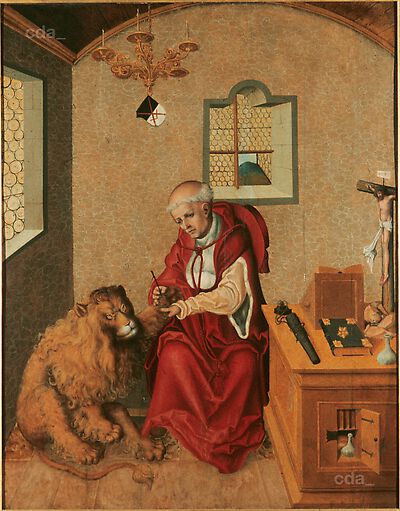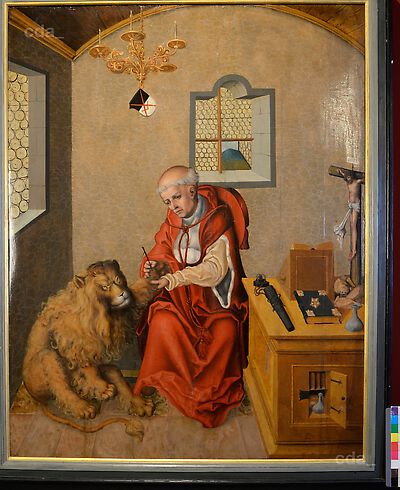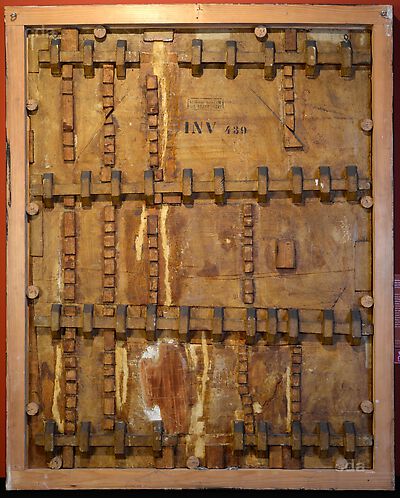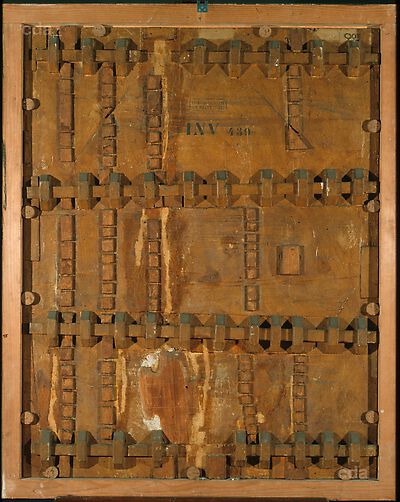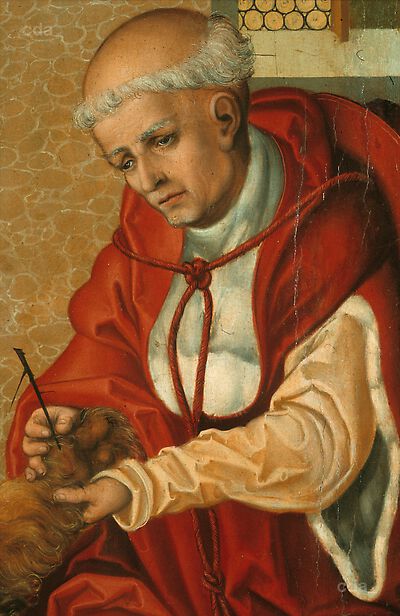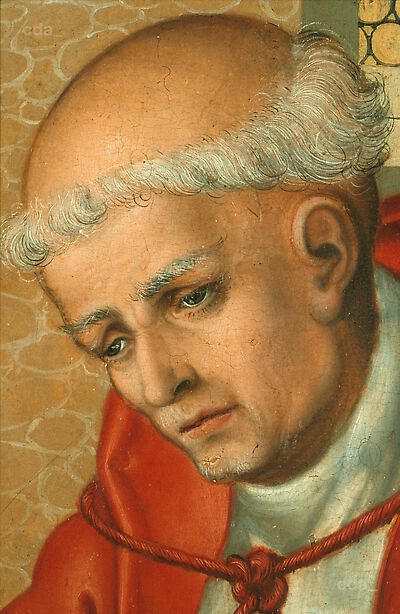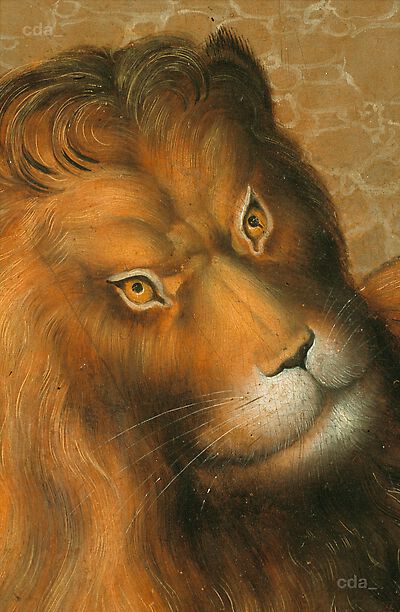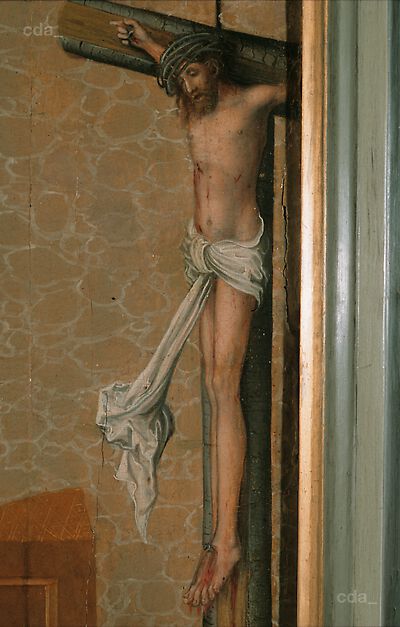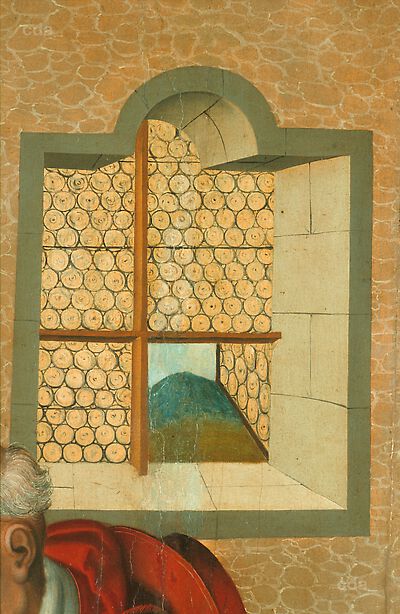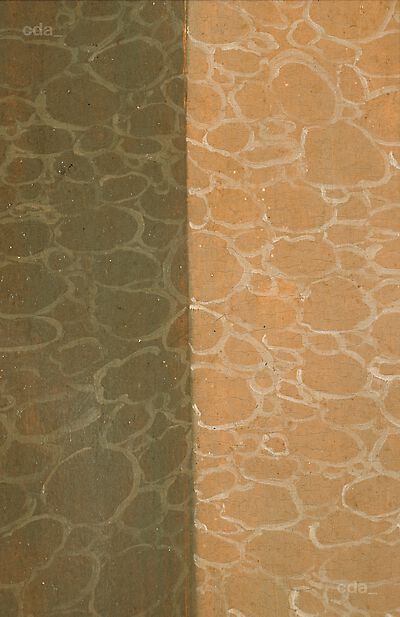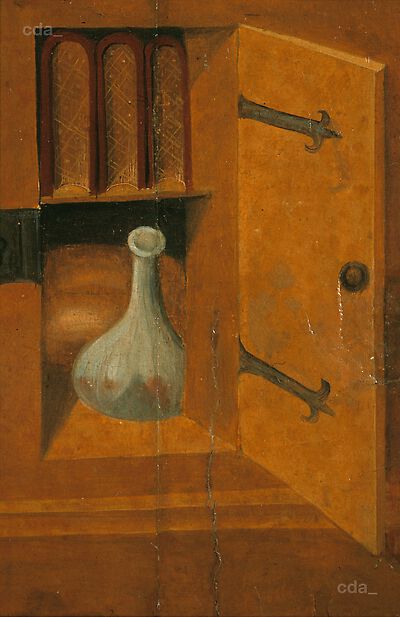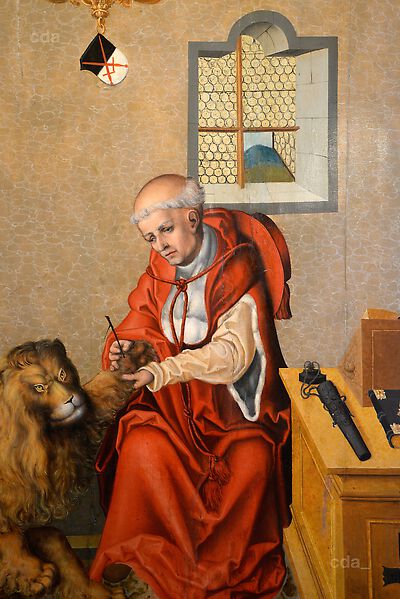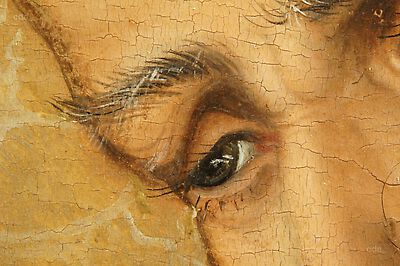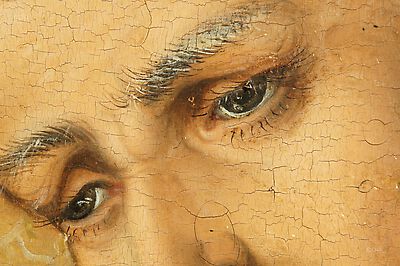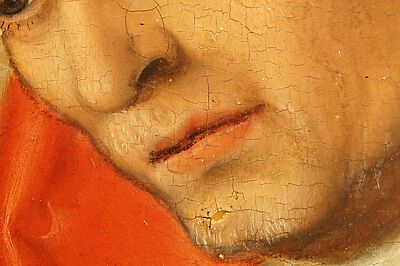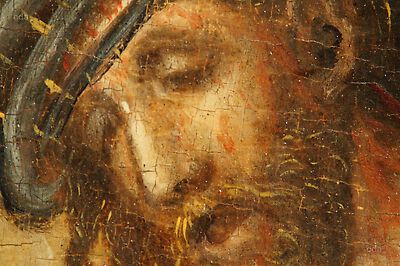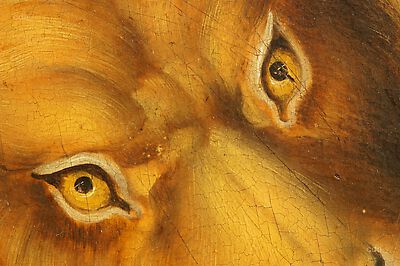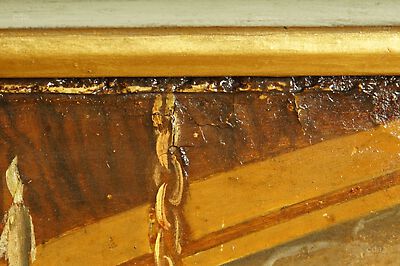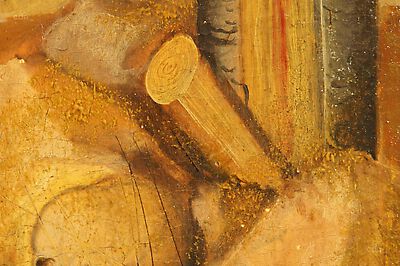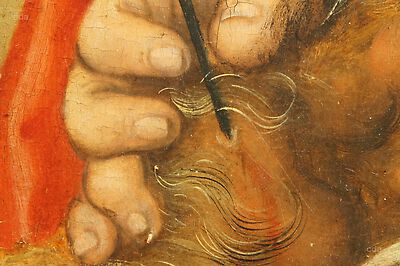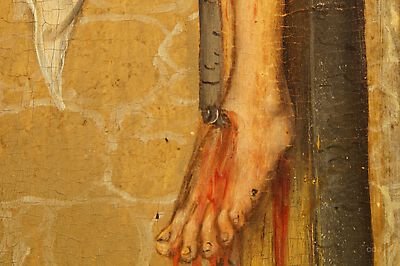- the ground was applied in two layers and carefully smoothed
- the ground is only clearly visible at the top edge. The other edges are covered by the frame. The painting is in a fragile state and cannot be removed from the frame (Dec. 2016).
- a semi-transparent, very thin and light coloured imprimatura appears to have been applied to the entire surface (visible on the big toe of Christ and at the left beside the upper beam of the cross).
The surface of the paint layers is smooth and has an enamel-like quality. Some impasto to accent highlights and contour lines is visible in raking light. A further exception to this smooth finish is evident in the floor tiles. Here the surface does not correspond with the brushstroke of the underlying layer. The very thin paint application has become more transparent with age, making the underdrawing partially visible to the naked eye. Less important motifs have been rationalized to a very thin paint application.
The flesh paint was executed first, followed by the red coat and hat, sleeves and shirt. Then the section with the crucifix and the desk was executed and subsequently the candlestick. The background was completed with the stone wall, which overlaps all neighbouring colour fields. The cord and the lion were painted last as single painted hairs from the fur were applied over the flesh paint of Jerome's hands and the background.
Flesh paint
Jerome's face was initially blocked in with thin, opaque pink flesh paint (red-white admixture). Over this highlights and shadows were added with thin glazes to modulate the face. These are partially lost due to overcleaning. The upper and lower eyelids were shaped with a light, opaque ochre tone, and the eyeball was painted with lead white. Then a thin transparent light red line was applied over the left eye bag, enlivening the eye. A whitish grey glaze was applied between the lead white of the eyeball and the red glaze to draw them together. [...] details like eyelashes were then added wet-in-wet in black paint with a fine pointed brush. Abrasion has altered the original compact appearance of the face, which is now slightly transparent. This porcelain-like character is further reinforced by the transparency of the thin, light paint layers caused by ageing. The binding medium (probably an oil-varnish) of the fine light grey hair on the beard remained resistant to the cleaning unlike the light glazes and does not have a tendency to yellow. Skillfully applied short fine deep pink lines were added to the delicate glazes on the mouth and a dark brown line, defining where the lips part (probably brown madder), gives them a sensuous and lively appearance.
Flesh paint (hands)
The shape of the fingers was modulated with very thin light and dark glazes over the underlayer of the flesh paint, now semi-transparent (underdrawing faintly visible). The nails were executed with a thin white layer and a fine brown line was drawn at with confidence at the top to create the volume of the finger and may also represent dirt. A fine line (0.4 - 0,5 mm) drawn in brown paint with a broad quill reinforces the contours and emphasizes the volume of the fingers.
Robe
St Jerome's gown was initially laid in with a thin layer of red vermillion underpaint, while the white areas were held in reserve. Areas of shadow were added with a red-black admixture and finally volume and the arrangement of the folds were represented with a red-lead white admixture applied with a broad brush. The brushstrokes are visible when inspected close up. Light and dark areas were blended when dry with a midtone and highlights were achieved by removing paint. Once dry a thin semi-transparent red glaze (madder or other red lake) was applied and removed from the red highlights. Finally the shadows on the gown and hat were glazed with two dark reddish to black layers.
To set the gown in a spatial context, while lending it more volume some of the folds and in particular the outer contours were reinforced with light and dark red contours depending on light and shadow. Once completed the light sleeves and shirt were painted (base tone, shadow, highlights and midtone). Finally the red cord with the tassels was added in an unconstrained, confident manner, its light and dark nuances flaring up variously. Some rogue strokes are visible at the beginning of the cord as well as on the ochre background.
The Crucifix
opaque pink coloured flesh paint (red-white admixture) was rapidly applied to the semi-transparent flesh coloured imprimatura. Highlights and shadows were blended with thin whitish-grey or dark tones. The highlight on the nose was created with an opaque white. The nails and crown were also applied in opaque paint. The paint application on the face is unusual: the lower lip was painted with a very thin glaze and fine highlights. The inner contours of the open mouth were drawn with an extra fine, precise madder line, suggesting the use of a quill. Together with the yellow ochre beard and the spots of blood the impression created by this area is very colourful.
Lion
The lion was laid in with a Siena tone. The snout and the shape of the eyes were executed with opaque lead white in a simplistic, seemingly awkward manner. The detailed finish of the snout followed wet-in-wet in white and grey. Inside the white boarder around the eye the eyeball was painted with opaque ochre and outlined with a black contour. A black iris with a white contour was added. Fine brown lines were applied to the iris and highlights were achieved with white impasto.
Although the execution of the eye is rather awkward, the use of different binding media and the variation of brush widths used for the fur are very convincing. The difference in quality may suggest the participation of two different workshop members. The tail was laid in with two quick drying layers of Siena over which brown paint was stippled. Here a very time saving and economic method was employed that conveys a realistic impression, particularly from a distance. The same technique can be observed in the execution of the stones beneath the crucifix. Single fine hairs were added to the fur after the contours of the fingers and the white-light grey paint of the stones.
